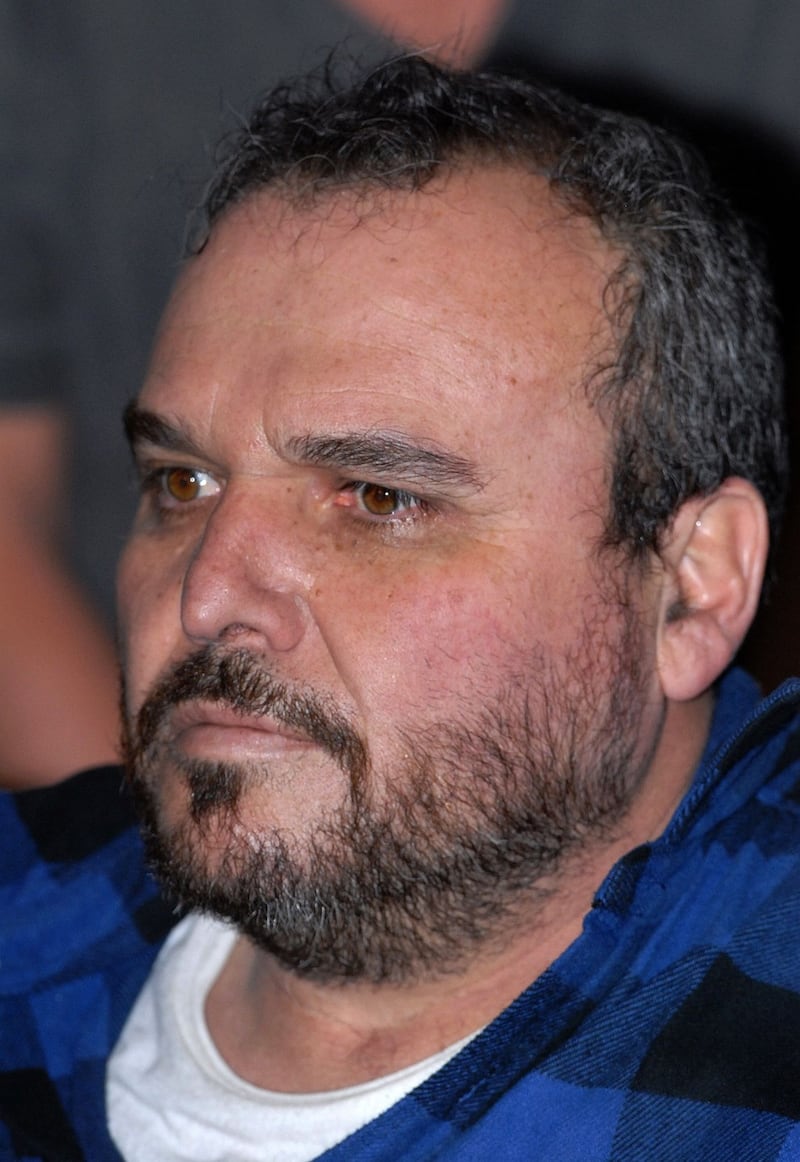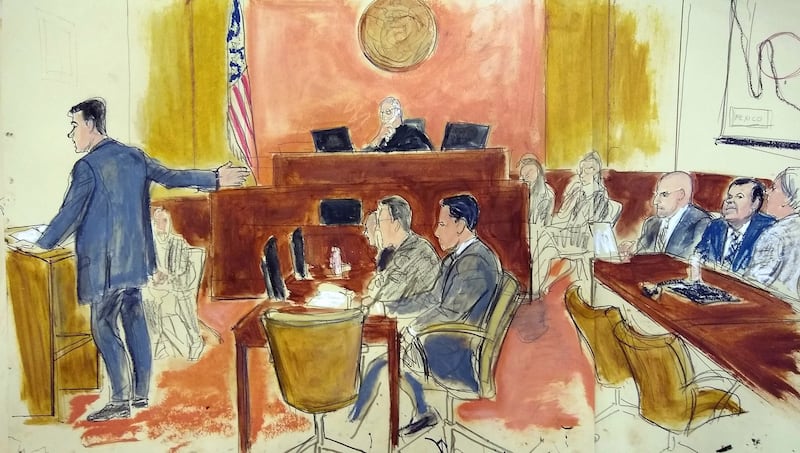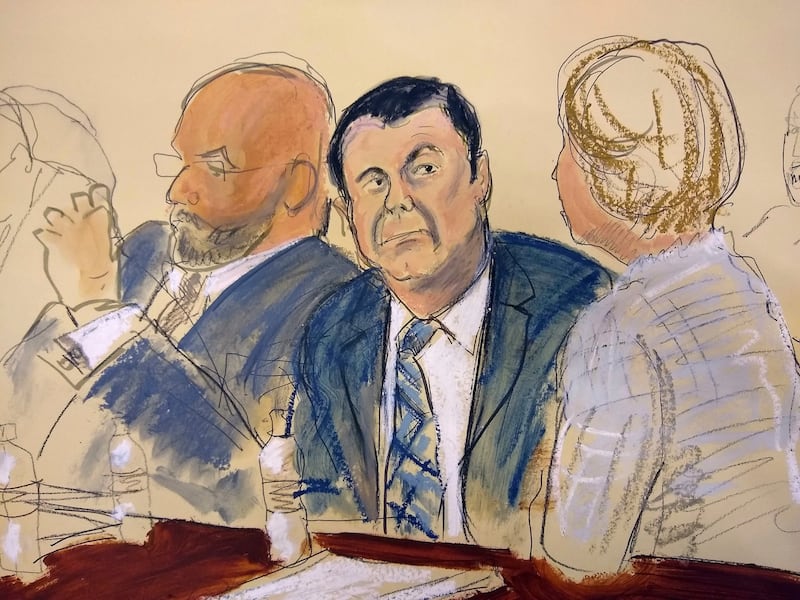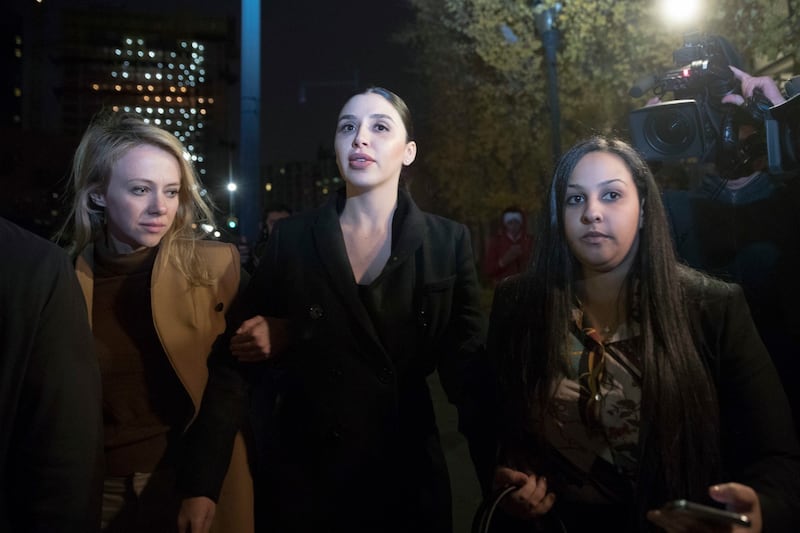The inner workings – and vast financial scale – of what is alleged to be the world’s biggest narco-trafficking organisation, the Sinaloa cartel, began to be laid bare on Wednesday by a former leader of the syndicate, Jesus Zambada Garcia, testifying against his own immediate boss, Joaquin “El Chapo” Guzman, on trial in New York.
Zambada, the cartel’s chief accountant for more than 15 years, said his brother, Ismael “El Mayo” Zambada, and Guzman were considered the top leaders of the Sinaloa cartel.
The prosecution called Jesus Zambada Garcia as only its third witness, causing surprise that one of the crucial “snitch” witnesses who have turned state’s evidence had appeared so soon. Zambada was arrested in 2008 on drug trafficking charges, extradited and pleaded guilty.

Direct examination began by establishing Zambada’s proximity to Guzman. He had organised helicopter transport for him soon after a jailbreak in 2001, “to escape from military forces because they were about to recapture him”.
He spoke to him by telephone on a number of occasions and was briefed on Guzman’s management of the cartel by his brother, the court heard.
Asked repeatedly how he knew what he knew, Zambada replied: “Because I was in the cartel” – at a high level. He said his brother and Guzman were among the four “leaders”, while he and three others were “sub-leaders”.
Below them worked sub-leaders all across Mexico to ensure official co-operation, and “workers”. These included sicarios whose job was to “kill people”, “drivers” who looked after land transport, “pilots” of “fast boats”, ships and planes, “engineers” who managed encrypted communications, and “security guards” who “provide security for the load [from and to] different locations in the world”.

Allies
Zambada spoke matter-of-factly about allies in law enforcement: a shipment of cocaine Zambada organised from Colombia into Chiapas “was guarded by government officials from the PGR [attorney general’s office] and the federal transport police”, said Zambada.
Guzman, listening to his old friend’s calm delivery, seemed agitated with disbelief at first, but relaxed back into his chair, arms folded, legs crossed, to hear Zambada’s evidence.
From the early 1990s until his arrest, Zambada was responsible for accounting and ran the cartel’s “plaza” in Mexico City, with responsibility for three warehouses, including an infamous one at Mexico City airport. He spoke with unflinching cool as though managing the affairs of any major corporation, which, in a way, he did.
The testimony became most enthralling when Zambada described details of how, for instance, cartel leaders would combine their separate fortunes to invest in shipments of cocaine from Colombia, typically of 30,000kg.
Those handled by Zambada usually came from an infamous narco-baron, Juan Carlos Ramirez, aka La Chupeta – since convicted in the US.
Initially, the Sinaloa cartel would split the proceeds from the load 50-50 with their Colombian suppliers (this would change, as the cartel increased its share), and it was Zambada’s job to do the accounts.
He explained to the court that five cartel leaders and sub-leaders, including his brother and Guzman, would each invest in order “to strengthen the cartel” with a bigger shipment, but also because if the load failed to reach its destination, “they lost some capital but not very much”.

Costs
Different destinations in the US involved varying costs and yielded incremental levels of profit, all in cash.
A shipment to Los Angeles, for instance, would sell at a street value of $20,000 a kilogram, with transport costs of $7,000 so that a load for which the Sinaloans were taking profits on 15,000kg would reap a profit of $13,000 a kilogram – a total of $195 million to the cartel and $39 million to each of its investors.
For Chicago, the transport cost per kilogram rose to $9,000 a kilogram, but the street price was higher – $25,000 a kilogram – so that “the profits would be $16,000 per kilo, $16m per tonne, at a profit of $48m per investor”.
New York was the prize market, with costs still at $9,000 but a street price of $35,000. “That would produce a profit of $26,000 per kilo,” explained Zambada punctiliously, “which would be $26m per tonne, and that would produce a profit per investor of $78m” – $390m to the cartel in net profit, from a single shipment.
Logistics
Transports came from Colombia aboard “small planes, large planes – jets – and commercial routes”, said Zambada, “usually maritime routes, fishing ships and merchant ships”.
A favourite means of transport to the US border was by gas container truck, with special compartments for cocaine within, which, if stopped and checked, released gas “so it would be difficult to find the cocaine”.
As Zambada continued, ice-cool, Guzman fidgeted, but at one point he burst out laughing.

At times, the prosecution’s examination did not follow up on tantalising details provided by Zambada. He said: “The object of the business is to control the market and prices of the product that the cartel manages, and also expenses for the services that are necessary to make the product arrive at the customer.”
One of narco-traffic’s great mysteries is how cocaine manages to steadily increase supply without a drop in price, but Zamabada’s expertise on this was not further explored.
Asked what kinds of meetings he held with the cartel leadership, Zambada replied, as to-the-point as ever: “Meetings about drug-trafficking transports, social kinds of meetings – and peace meetings.” Examiners did not ask what “peace meetings” were, or with what allies “peace” was being made with.
Prosecutors did not ask how the billions in cash was banked once “back in Mexico”.
As he left court for an afternoon break, Zambada walked right past Guzman, giving him a nod. El Chapo raised his eyebrows, and rolled his eyes towards the courtroom ceiling. – Guardian








